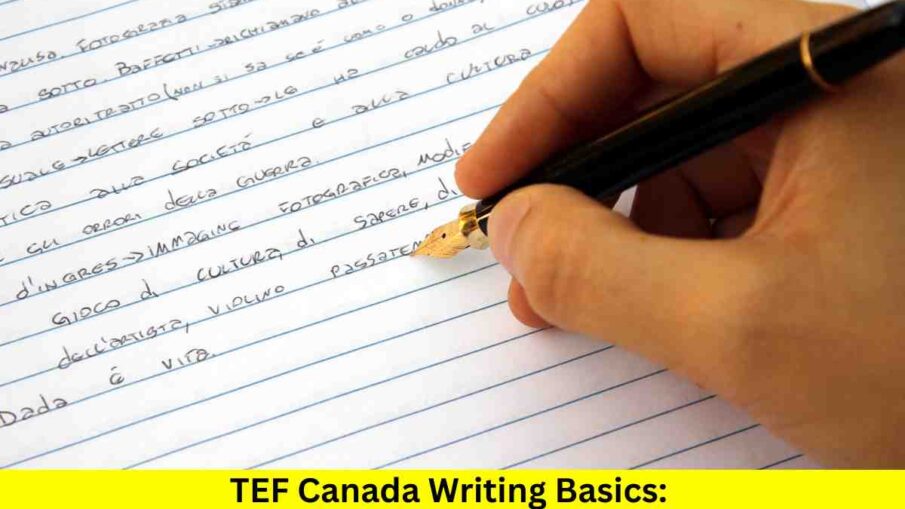TEF Canada Writing Basics: Articulating Your Thoughts:- Certainly, mastering the ability to articulate your thoughts clearly in the TEF Canada writing section or any language proficiency exam requires understanding the language’s structure, style, and nuances. Here are some fundamental aspects you should consider:
1. Understand the Context:
- Purpose: Are you writing to inform, persuade, describe, or narrate? The purpose will shape your content and style.
- Audience: Formal language for officials, informal for friends. Adjust your tone based on who you’re addressing.
2. Structure Your Text:
- Introduction: Clearly state the topic or the purpose of your writing. For essays, introduce your argument or main idea.
- Body: Develop your points through paragraphs. Each paragraph should contain one main idea and relevant supporting details.
- Conclusion: Summarize the main points and reiterate the purpose or primary argument. Avoid introducing new information.
3. Language and Style:
- Clarity and Conciseness: Use simple and clear language. Avoid complex sentences that could confuse readers.
- Tone and Formality: Match the situation; use formal language for essays and responses in professional contexts.
- Active Voice: Whenever possible, structure your sentences to emphasize the subject performing the action, making your writing more engaging.
4. Grammar and Syntax:
- Sentence Structure: Use a variety of sentence structures, balancing simple and complex sentences to demonstrate linguistic flexibility.
- Punctuation: Correct use of commas, periods, and semicolons can clarify your presenting ideas.
- Tenses: Be consistent with tenses, ensuring they correspond correctly across your text.
5. Vocabulary:
- Diversity: Show a broad range of vocabulary but use it appropriately. Misused complex words can detract from your credibility.
- Context-Appropriate: Choose words that fit the context of your sentence and overall message.
6. Revise and Edit:
- Proofread: Check for spelling and grammar errors that can detract from your message.
- Edit: Be prepared to make substantial changes for clarity, conciseness, and coherence.
- Feedback: If possible, have someone else review your work. They may catch mistakes you missed or offer valuable suggestions.
7. Practice Writing:
- Regular Practice: Make writing a daily habit. Practice different text types: emails, essays, letters, etc.
- Analyze Models: Study sample texts or model answers. Analyze the vocabulary, sentence structure, and how ideas are developed.
- Timed Exercises: Simulate exam conditions to get comfortable with time constraints.
8. Useful Techniques:
- Mind Mapping: Before writing, organize your thoughts and ideas into a mind map to establish connections between points.
- Paraphrasing: Practice rephrasing sentences or ideas in your own words. This skill is helpful in explaining points and avoiding plagiarism.
9. Resources and Tools:
- Study Guides: Utilize guides designed explicitly for TEF Canada to familiarize yourself with the exam format and expectations.
- Language Tools: Use dictionaries or thesauruses for vocabulary enhancement. Grammar-checking tools can help identify areas for improvement.
10. Mental and Physical Preparedness:
- Relaxation Techniques: Manage anxiety through deep breathing or meditation before the exam.
- Physical Health: Rest, nutrition, and physical activity play a role in mental sharpness and focus.
By integrating these aspects into your preparation, you’ll be better equipped to articulate your thoughts clearly and effectively in the TEF Canada writing section. Remember, proficiency comes with practice and persistence.

Leave a Reply